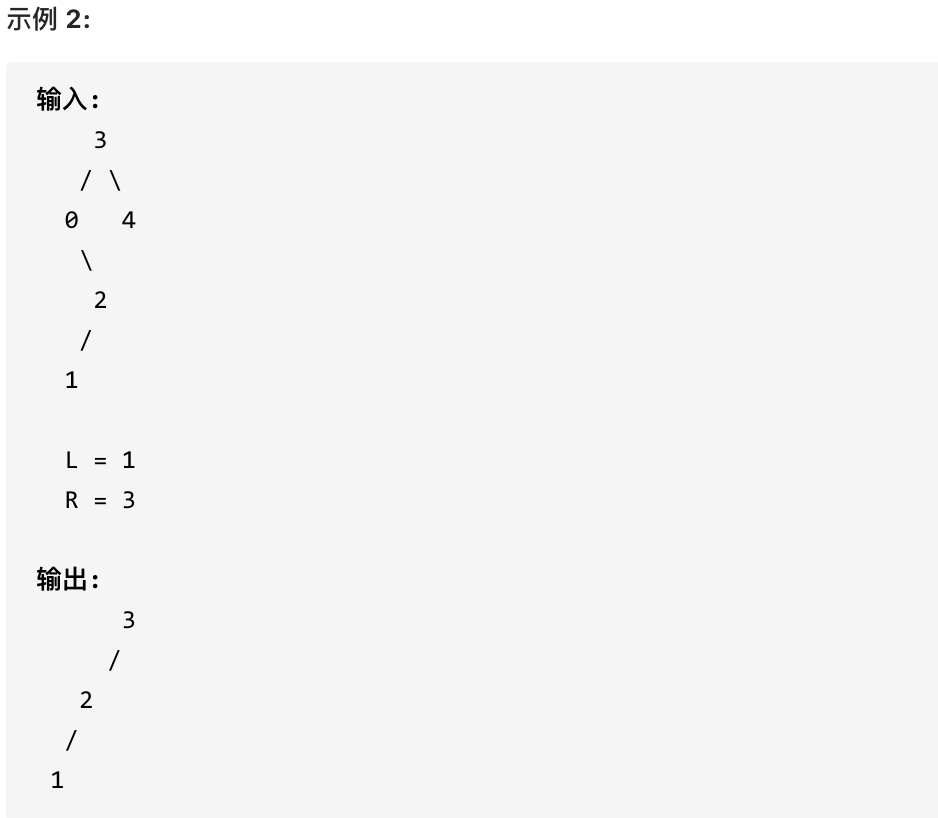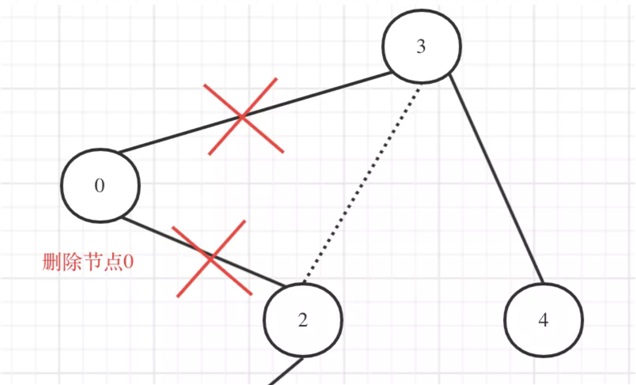标签:思路 his return 二叉树 class trim 搜索 证明 没有
给你二叉搜索树的根节点 root ,同时给定最小边界low 和最大边界 high。通过修剪二叉搜索树,使得所有节点的值在[low, high]中。修剪树不应该改变保留在树中的元素的相对结构(即,如果没有被移除,原有的父代子代关系都应当保留)。可以证明,存在唯一的答案。
所以结果应当返回修剪好的二叉搜索树的新的根节点。注意,根节点可能会根据给定的边界发生改变。


[1, 3]区间在二叉搜索树的中可不是单纯的节点3和左孩子节点0就决定的,还要考虑节点0的右子树:

1.确定递归函数的参数以及返回值
通过递归函数的返回值来移除节点。
TreeNode trimBST(TreeNode root, int low, int high)
2.确定终止条件
修剪的操作并不是在终止条件上进行的,所以就是遇到空节点返回就可以了。
3.确定单层递归的逻辑
/**
* Definition for a binary tree node.
* public class TreeNode {
* int val;
* TreeNode left;
* TreeNode right;
* TreeNode() {}
* TreeNode(int val) { this.val = val; }
* TreeNode(int val, TreeNode left, TreeNode right) {
* this.val = val;
* this.left = left;
* this.right = right;
* }
* }
*/
class Solution {
public TreeNode trimBST(TreeNode root, int low, int high) {
if(root == null){
return null;
}
if (root.val < low){
return trimBST(root.right, low, high);
}
if (root.val > high){
return trimBST(root.left, low, high);
}
root.left = trimBST(root.left, low, high);
root.right = trimBST(root.right, low, high);
return root;
}
}
标签:思路 his return 二叉树 class trim 搜索 证明 没有
原文地址:https://www.cnblogs.com/luedong/p/14747614.html